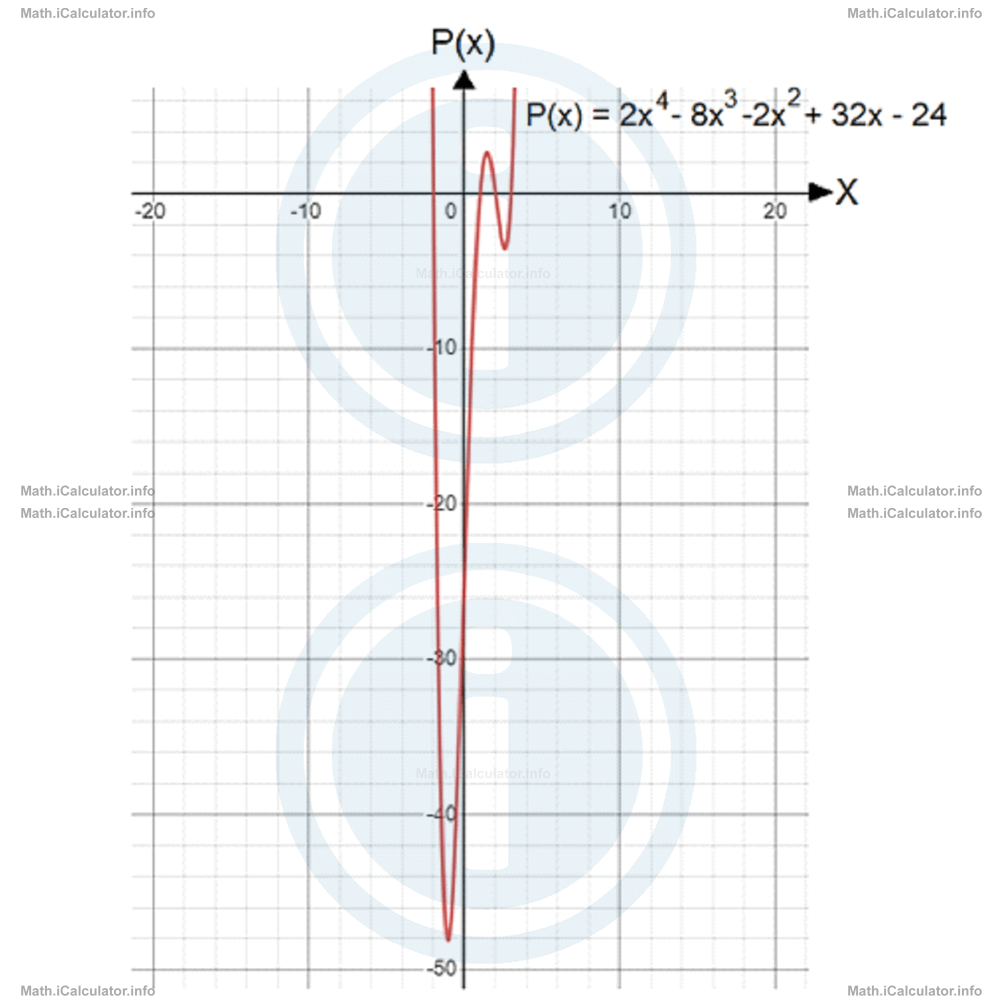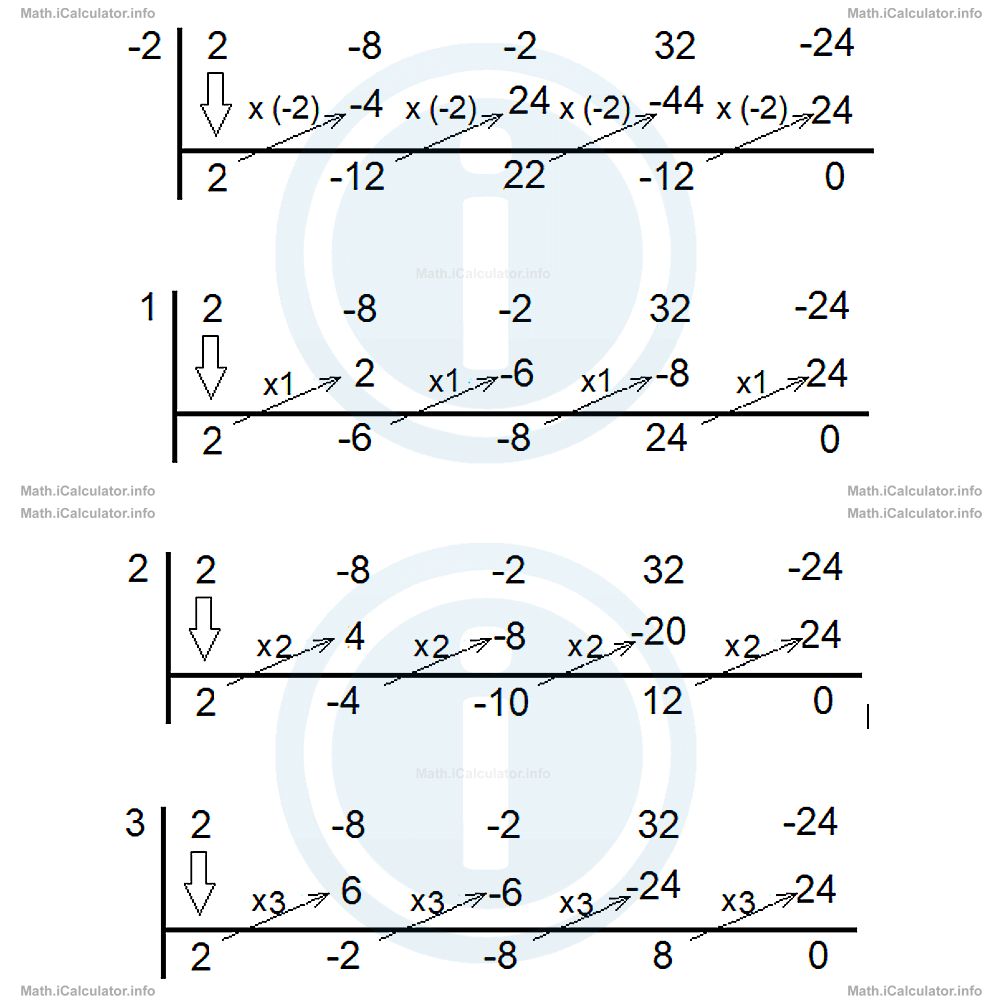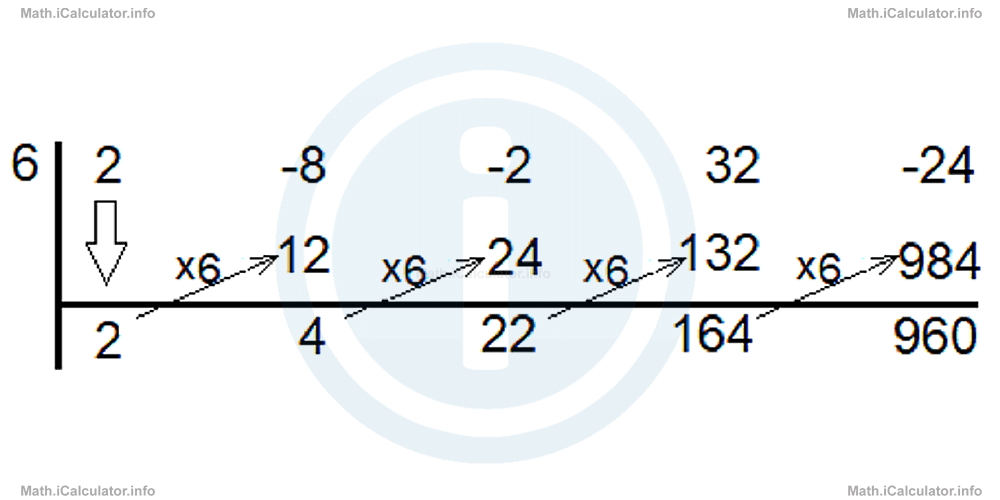Menu
Math Lesson 11.3.4 - How to identify the Zeroes of the Polynomial from the List of Possible Zeroes
Please provide a rating, it takes seconds and helps us to keep this resource free for all to use
Welcome to our Math lesson on How to identify the Zeroes of the Polynomial from the List of Possible Zeroes, this is the fourth lesson of our suite of math lessons covering the topic of Solutions for Polynomial Equations, you can find links to the other lessons within this tutorial and access additional Math learning resources below this lesson.
Identifying the Zeroes of the Polynomial from the List of Possible Zeroes
So far, we have focused our attention on a list of possible zeroes (roots) of the polynomial. Now we are closer to the solution but we still have a long path ahead, as not all the values listed above are roots of the given polynomial. Indeed, from the previous tutorials, it is known that a fourth-degree polynomial - as in our example - may have four roots (zeroes) at maximum. Above, we have listed 40 possible values, so we have to reject most of them.
There are two possible ways to identify all rational zeroes of the polynomial P(x):
- Substitute all possible zeroes found earlier in the polynomial P(x) and check for which of these values we have P(x) = 0.
- Use the Synthetic Division Method for each possible zero and see which of them gives no remainder.
The first method is faster for this process. Hence,
P(1/2) = 2(1/2)4 - 8(1/2)3 - 2(1/2)2 + 32(1/2) - 24 = -75/8
P(-1) = 2(-1)4 - 8(-1)3 - 2(-1)2 + 32(-1) - 24 = -48
P(1) = 2(1)4 - 8(1)3 - 2(1)2 + 32(1) - 24 = 0
P(-3/2) = 2(-3/2)4 - 8(-3/2)3 - 2(-3/2)2 + 32(-3/2) - 24 = -405/8
P(3/2) = 2(3/2)4 - 8(3/2)3 - 2(3/2)2 + 32(3/2) - 24 = 21/8
P(-2) = 2(-2)4 - 8(-2)3 - 2(-2)2 + 32(-2) - 24 = 0
P(2) = 2(2)4 - 8(2)3 - 2(2)2 + 32(2) - 24 = 0
P(-3) = 2(-3)4 - 8(-3)3 - 2(-3)2 + 32(-3) - 24 = 276
P(3) = 2(3)4 - 8(3)3 - 2(3)2 + 32(3) - 24 = 0
Now that we identified the maximum possible number of four zeroes (-1, 1, 2 and 3) we stop doing more calculations with the rest of numbers, as we already have the list of all zeroes of the polynomial P(x). Indeed, the graph of this polynomial shows the four x-intercepts at the given zeroes found above.

We can prove the results obtained using the Synthetic Division of Polynomials Method. Thus, writing at the upper row the numbers 2, -8, -2, 32 and -24, which correspond to the coefficients and the constant of the original polynomial, we obtain for the following schemes for the four zeroes: -2, 1, 2 and 3.

Now, let's see another scheme where the number on the left does not belong to the list of the polynomial roots. We expect to obtain a number different from zero on the rightmost position of the last row, which represents the remainder of the division. Thus, for x = 6, we have

Thus, the remainder of P(x) and Q(x) where Q(x) = x - 6, is 960.
Another advantage of the method described above is that after having identified all zeroes of the polynomial, we can write all possible forms of factorisation for the given polynomial. The coefficients and the constant of the quotient polynomials appear in the last row. At this point, it is worth to state that the degree of the quotient polynomial is one less than that of the original polynomial. Hence, in the specific case, the degree of all quotient polynomials is 3.
All factorised forms of the polynomial P(x) = 2x4 - 8x3 - 2x2 + 32x - 24 are shown below:
- Considering the root x = -2 of the polynomial P(x), we obtain the following factorisation: P(x) = 2x4 - 8x3 - 2x2 + 32x - 24It is better to have the polynomial factorised further if possible. In our case, it is easy to see that all terms on the second expression are multiples of 2. Hence, we can write
= (x + 2)(2x3 - 12x2 + 22x - 12)P(x) = 2x4 - 8x3 - 2x2 + 32x - 24
= 2 ∙ (x + 2)(x3 - 6x2 + 11x - 6) - Considering the root x = 1 of the polynomial P(x), we obtain the following factorisation: P(x) = 2x4 - 8x3 - 2x2 + 32x - 24Again, we can factorise further the second expression by sending out the common factor 2. Hence, we obtain
= (x - 1)(2x3 - 6x2 - 8x + 24)P(x) = 2x4 - 8x3 - 2x2 + 32x - 24
= 2(x - 1)(x3 - 3x2 - 4x + 12) - Considering the root x = 2 of the polynomial P(x), we obtain the following factorisation: P(x) = 2x4 - 8x3 - 2x2 + 32x - 24Again, we can factorise further the second expression by sending out the common factor 2. Hence, we obtain
= (x - 2)(2x3 - 4x2 - 10x + 12)P(x) = 2x4 - 8x3 - 2x2 + 32x - 24
= 2(x - 2)(x3 - 2x2 - 5x + 6) - Considering the root x = 3 of the polynomial P(x), we obtain the following factorisation: P(x) = 2x4 - 8x3 - 2x2 + 32x - 24Again, we can factorise further the second expression by sending out the common factor 2. Hence, we obtain
= (x - 3)(2x3 - 2x2 - 8x + 8)P(x) = 2x4 - 8x3 - 2x2 + 32x - 24
= 2(x - 3)(x3 - x2 - 4x + 4)
More Solutions for Polynomial Equations Lessons and Learning Resources
Whats next?
Enjoy the "How to identify the Zeroes of the Polynomial from the List of Possible Zeroes" math lesson? People who liked the "Solutions for Polynomial Equations lesson found the following resources useful:
- Zeroes Of The Polynomial Feedback. Helps other - Leave a rating for this zeroes of the polynomial (see below)
- Polynomials Math tutorial: Solutions for Polynomial Equations. Read the Solutions for Polynomial Equations math tutorial and build your math knowledge of Polynomials
- Polynomials Video tutorial: Solutions for Polynomial Equations. Watch or listen to the Solutions for Polynomial Equations video tutorial, a useful way to help you revise when travelling to and from school/college
- Polynomials Revision Notes: Solutions for Polynomial Equations. Print the notes so you can revise the key points covered in the math tutorial for Solutions for Polynomial Equations
- Polynomials Practice Questions: Solutions for Polynomial Equations. Test and improve your knowledge of Solutions for Polynomial Equations with example questins and answers
- Check your calculations for Polynomials questions with our excellent Polynomials calculators which contain full equations and calculations clearly displayed line by line. See the Polynomials Calculators by iCalculator™ below.
- Continuing learning polynomials - read our next math tutorial: Rational Expressions
Help others Learning Math just like you
Please provide a rating, it takes seconds and helps us to keep this resource free for all to use
We hope you found this Math tutorial "Solutions for Polynomial Equations" useful. If you did it would be great if you could spare the time to rate this math tutorial (simply click on the number of stars that match your assessment of this math learning aide) and/or share on social media, this helps us identify popular tutorials and calculators and expand our free learning resources to support our users around the world have free access to expand their knowledge of math and other disciplines.